Our next little slice of America would be Paso Robles, California. So on May 30, 2016, we put rubber to the road and left Coalinga behind us around 11:00 a.m. and made a short drive on CA-41 then CA-46 west for 73 miles toward Paso Robles RV Ranch. The land was mostly barren and dry with 35% humidity and the temperature outside was 93F (33.8C) with blue skies above. The tint on the horizon was mostly yellow from brittle, low lying grasses coating the hills.



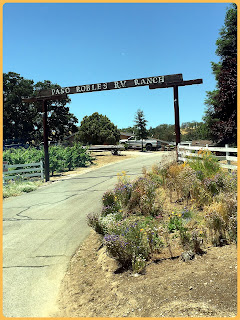
The front office where we checked in offered a cool, comfortable garden full of real green grass, big shady trees, lots of flowers and even a fountain. It was an oasis to escape the desert environment around us.




The campsites were spacious and level and had full hookup of 50amp electric, water and sewer. We settled in and after wandering around looking at my surroundings, I found a swing to play on.




Known also for another type of "watering place", Paso Robles has been spoken of and written about since 1795 for their myriad supply of springs and mud baths. Unfortunately, only three locations still exist that offer such services in the area. Major league American baseball teams used to visit Paso Robles as a spring training home. Teams such as the Pittsburgh Pirates and the Chicago White Sox stayed and soaked in the mineral hot springs to soothe tired, aching muscles.
Back in the 1920's, Paso Robles also enjoyed the reputation of being the "Almond City". With the largest concentration of almond orchards, Paso Robles had 25,000 acres dedicated to this crop. Since then, many orchards have been turned into vineyards.
For my old movie buffs: pioneering film director King Vidor was born in Paso Robles. His best known films include The Big Parade (1925), Stella Dallas (1937) and Duel In The Sun (1946). A little known fact about Mr. Vidor was that he was entered into the Guinness Book Of World Records as having the longest career as a film director. He also directed the Kansas scenes in the legendary film Wizard of Oz but was never credited.
The next day (May 31st) was our 30th wedding anniversary so Rick and I celebrated by spending the day exploring on our own. We jumped into the car and headed towards the old whaling seaside town of San Simeon, a place I've always wanted to experience. An added extra treat would be seeing the ocean again. We left home on this wild adventure over a month ago and we haven't seen the sea or smelled the salt air since then. The majority of our experiences has been dry, arid country...up until today.
We drove 30 miles from the campground through Cambria and towards the coast on winding roads and changing elevations from 710 feet above sea level, up to 1,500 then back down to sea level. The outdoor temperature changed also from 90F to 52F in just that time. The landscape was full of yellows and greens amidst hills that peaked and rolled continuously across the roadside. Then we saw pastures neatly mowed in rows along the flat lands.








Strange weather...suddenly a fog blew in and the sun fell behind grey clouds. We drove further along the coast and saw the Piedras Blanca Light Station up ahead. Since the weather would not allow any visibility, we passed on that visit.



Finally the fog cleared as we drove further along California Coast Highway 1. The William Randolph Hearst State Beach contained the San Simeon Pier (built in 1957) and we had to stop and check out this scenery. This was a locals beach, not very long but well maintained and very pretty. In the sunshine and cool breeze, I stared at the cool mint green water and the long strings of sea kelp as it clung to the pilings.
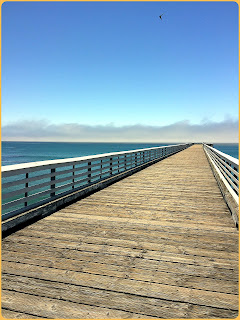



The pier offered an amazing vantage point from which to appreciate the beauty of the coast in this area. Colorful kayaks were being prepped in tidal pools by adventurers and people were enjoying the beach.






The area around the beach was home to the old San Simeon Village which contained the Hearst Ranch Winery (building was circa 1850) and the historic Sebastian's General Store, built in 1852 and now known simply as Sebastian's. The Sebastian's General Store provided goods and service to local whalers, fishermen, miners and neighboring ranchers in the early 20th century. Both establishments now offer wine tastings, good food and a great view of the ocean.

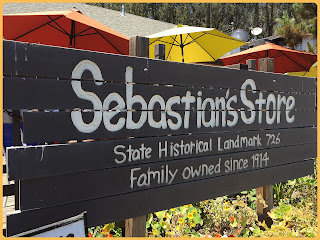
The one-room San Simeon Schoolhouse, built in 1881, sat in the middle of a field full of wildflowers. Beautiful!

The odd, unpredictable weather once again grew cloudy and overcast and it got really chilly. So, we decided to drive back towards the campground in Paso Robles. Ten miles south of San Simeon was the town of Cambria and Moonstone Beach. Moonstone Beach is part of the Hearst San Simeon State Park and had an uncrowded, artsy, laid back vibe to it. It also had a one mile long boardwalk that stretched above the beach. Local artisan craft shops, charming cafes and small hotels/cottages were across the street from the beach with some spectacular views of the ocean.




Pretty succulents and other landscaping adorned each side of the boardwalk.


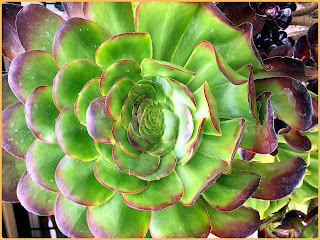
The beach got it's name from the small rocks, known as moonstones, covering sections of the sand. I saw some amazing pieces of sun bleached driftwood lying on the beach.


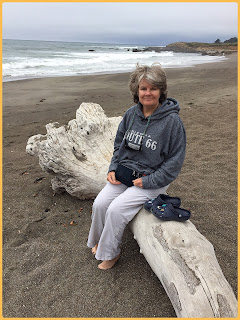
After walking along Moonstone Beach, we headed to the little town of Cambria. There we found a warm, cozy cafe for some lunch and a nice bottle of wine. Cheers to 30 years shared together and many more to come.

On our ride back to the campground, we followed the path we had taken earlier that day. I have to say that as dry and harsh as this land was, it had its allure. You can't help but appreciate the curves and colors of the scenery. We stopped along the way so that we could be a part of the beauty...touch it, feel it and breathe it in. This was one of the reasons I travel. It was different from home and it taught me that I don't necessarily have to go far in this world in order to be blown away by Mother Nature and feel the excitement of her power. It was humbling and it was serene. I loved it.







Once back at the campground, we found out that the electricity had been out for over an hour. Folks were seated outside their campers/motorhomes and just talking and mingling amongst each other. What an end to an already perfect day. This was what camping was all about - meeting new friends and finding out how interesting people can be once we spoke to each other. Awesome!

Next was Hearst Castle...what a sight! Let's go: California - (Part 5) Hearst Castle

No comments:
Post a Comment